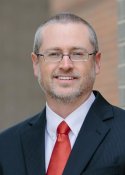Aaron Durham, Northside High School, Fort Smith, AR
Reprinted with permission from the May 2016 issue of Segue, the Arkansas Music Educators Journal

Music educators are dependent on their hearing ability. In order to listen critically and analyze their students’ performances and assess musical achievement, these teachers engage in a lifetime of musical listening experiences. Ironically, intensive musical experiences can cause damage to hearing ability. Of particular concern is music educators’ susceptibility to noise-induced hearing loss (NIHL). Noise-induced hearing loss is caused by permanent damage to the inner ear where processes in the auditory cortex occur: it cannot be repaired.
The two main causes of noise-induced hearing loss are (a) the level (volume) of sound and (b) the duration of exposure. The unique problem for music educators is that NIHL is a recurrent occupational reality. The perplexing issue is that most music educators do not receive any training and are unaware of the risks and preventive possibilities in dealing with NIHL. Sound pressure (i.e. intensity) is measured in units called decibels (dBA). A decibel measurement represents the strength of sound. To give points of reference of decibels to commonly known sounds, consider the following examples:
| Common Sound | Decibel Measurement |
| Rustling of leaves | 20 dBA |
| Running refrigerator | 45 dBA |
| Typical conversation | 60 dBA |
| Heavy city traffic | 85 dBA |
| Lawn mower | 100 dBA |
| Marching band | 115 dBA |
| Siren | 120 dBA |
| Gun shot | 150 dBA |
Contemporary research in hearing health involves applying the same noise safety standards for industrial environments within music teaching environments. Music researchers apply sound safety standards enforced by The National Institute of Occupational Safety and Health (NIOSH). The maximum recommended daily noise dosage standard for NIOSH is 85 dBA over an eight-hour period. NIOSH uses a 3 decibel exchange rate, which means that the maximum allowable noise exposure time is cut in half with every 3 dBA increase in sound pressure. Because NIHL risks involve both intensity and duration of exposure, consider how safe exposure limits are decreased in relation to sound intensity:
Table of Noise-Exposure Levels and Maximum Safe Durations
| Noise level (dBA) |
Duration (Hours: Minutes: Seconds) |
| 82 | 16:00:00 |
| 85 | 8:00:00 |
| 88 | 4:00:00 |
| 91 | 2:00:00 |
| 94 | 1:00:00 |
| 97 | 0:30:00 |
| 100 | 0:15:00 |
| 103 | 0:07:30 |
| 106 | 0:03:45 |
| 109 | 0:01:53 |
| 112 | 0:00:56 |
(Yes, above 110 dBA is less than 1 minute – see the first table for marching band measurement)
Music researchers frequently collect sound data through the use of sound meters and noise dosimeters. Noise dosimeters can display an average sound pressure reading, as well as, a percentage of daily noise dosage. So what types of noise levels are researchers gathering within music classrooms? Noise level reading considered “unsafe” by NIOSH standards are frequently measured within instrumental music classrooms. In a study by Behar et al. (2004), the music teachers with the highest noise dosages were the teachers of recorder classes and secondary band directors. The recorder class teachers experienced an average daily noise exposure dosage of 88.2 dBA and the secondary band teachers with a daily noise exposure average of 90.9 dBA. Mace (2006) found excessive noise exposure for collegiate music instructors. In this particular study, the trombone professor experienced 727.3% of the NIOSH allowable noise dosage within one day of instruction. Other music performance faculty that exceeded their daily exposure in this study were clarinet (128.7%), percussion (323.5%), accompanist (200.5%), and jazz conductor (341.7%). Research also suggests consistent noise overexposure for band directors (Hayes, 2013; Jin, Nelson, Schlauch, and Carney, 2013; Owens, 2004; Royer, 2003). Jin, Nelson, Schlauch and Carney (2013) observed a marching band director’s average sound pressure level exposures within a ninety minute marching band rehearsal ranging from 104 – 107 dBA. Within my own research, I observed an eighth grade band director experience 105.1% of their daily “allowable” noise exposure just within one 50 minute class period. I also observed a high school symphonic band conductor experience 70.9% of daily noise exposure during one rehearsal. Variables that seem to affect the amount of noise exposure for music educators include the number of students within the classroom, the rehearsal environment (i.e. size and acoustical properties), and the duration of noise exposure within the instructional day. An interesting factor affecting noise exposure is “teaching style”. Instrumental teachers incorporating more questioning, music theory, counting activities, etc. experience lower noise dosages throughout the teaching day.
So what measures can music educators take to protect their hearing? First, it is advisable for music educators to measure their noise exposure within their own teaching environments. This can be accomplished easily through the use of a sound level (i.e. decibel) meter. At the time of this publication, a sound meter made by BAFX could be purchased through Amazon for less than twenty dollars. There are also readily available free and/or inexpensive sound level meter apps for smartphones and tablets. A more advanced sound meter by Faber Acoustical, LLC has an upgrade that includes a noise dosimeter that could provide music educators their percentage of daily allowable noise dosage within a musical activity. Regardless of technology used, it is advisable that music educators measure the amount of sound that’s occurring in their respective environments. If you are observing consistent levels greater than 85 dBA, you could be putting yourself at risk for noise-induced hearing loss!
Armed with info on which musical activities are posing their highest level of noise exposure, it is next advisable that music teachers wear hearing protection during such activities. Research suggests that music educators are inconsistent in their use of hearing protection. In the spring of 2015, I surveyed 203 music educators in order to determine their attitudes toward hearing health. One survey question asked, “Do you wear hearing protection in rehearsals or performances?”
Do you wear hearing protection in rehearsals or performances?
| Never | Seldom | Sometimes | Often | Always | ||
| Frequency | 56.16% | 18.23% | 21.18% | 3.45% | 0.99% | Total |
| Teacher Responses | 114 | 37 | 43 | 7 | 2 | 203 |
Perhaps music educators are reluctant to use hearing protection because of the perceived change in audio quality. Noise filters may help music educators combat this problem. Readily available noise filters, such as the ETY made by Etymotic Research can provide a more “flat” attenuation, meaning high, mid, and low frequencies are reduced more uniformly. The result is a more consistent perceived sound that isn’t as “muffled” sounding as with typical earplugs. The ETY claims to reduce sound by 20 dBA across the range of hearing. Etymotic also has custom molded filters with changeable filters at various noise reducing options.
Speaking from experience, I use the ETY “High Fidelity” Earplugs every time I’m in a potentially damaging noise environment. Although not ideal, I am able to hear more clearly than with typical and/or foam material earplugs. Around five years ago, I began to notice a constant “hissing” sound in my ears. Originally, I thought it was due to sinus congestion, but the hissing sound didn’t go away. I visited my MD who suggested we get my hearing screened by an audiologist. Although the results showed my hearing function still within the “normal” range for my age group, the audiologist diagnosed me as having noise-induced tinnitus. I still suffer from this condition, and it is more evident when I’m in a quiet environment. My tinnitus has been a “wake up call” for me. I use noise filters regularly, especially when in front of a marching band, pep rallies, football games, rock band rehearsals, jazz band rehearsals, and beginning brass classes. Do yourself a favor and become proactive in taking measures to protect your hearing!
References
Hayes, P. (2013). Noise doses of high school band directors. Journal of Band Research, 49(1), 54-70.
Owens, D. (2004). Sound pressure levels experienced by the high school band director. Medical Problems Of Performing Artists, 19(3), 109-115.
Royer, R. (2003). Sound pressure levels and frequencies in secondary public school band programs. Journal of Band Research, 38(2), 22-43.
Su-Hyun, J., Nelson, P. B., Schlauch, R. S., & Carney, E. (2013). Hearing conservation program for marching band members: A risk for noise-induced hearing loss?. American Journal of Audiology, 22(1), 26-39.














